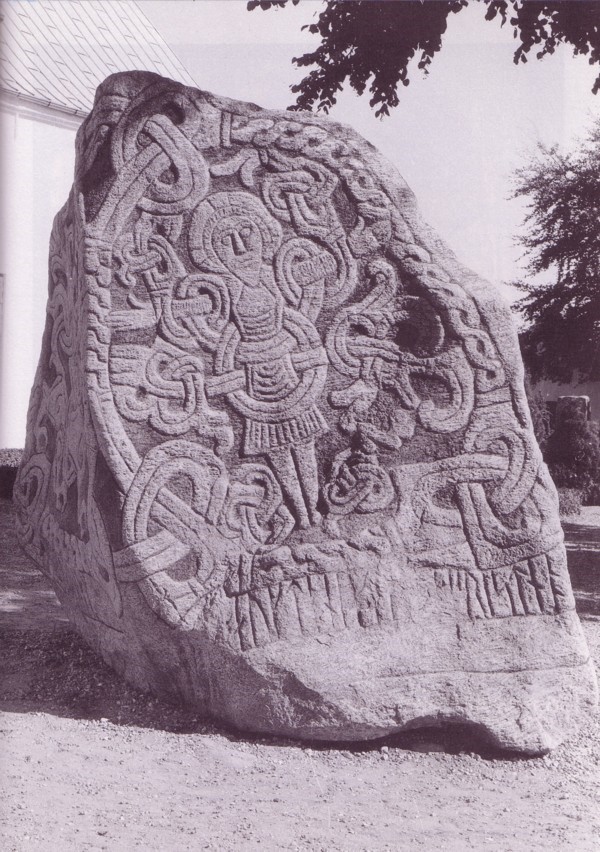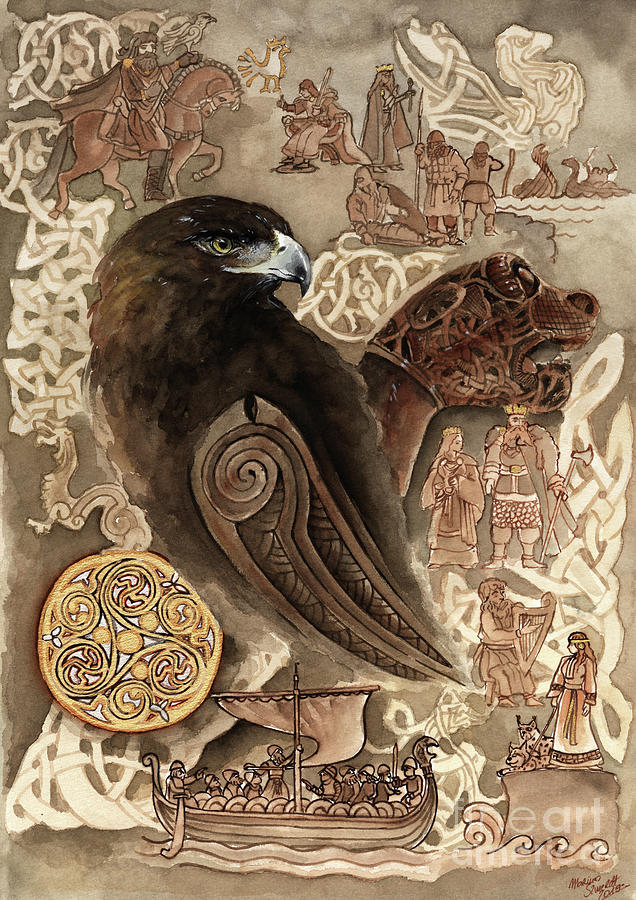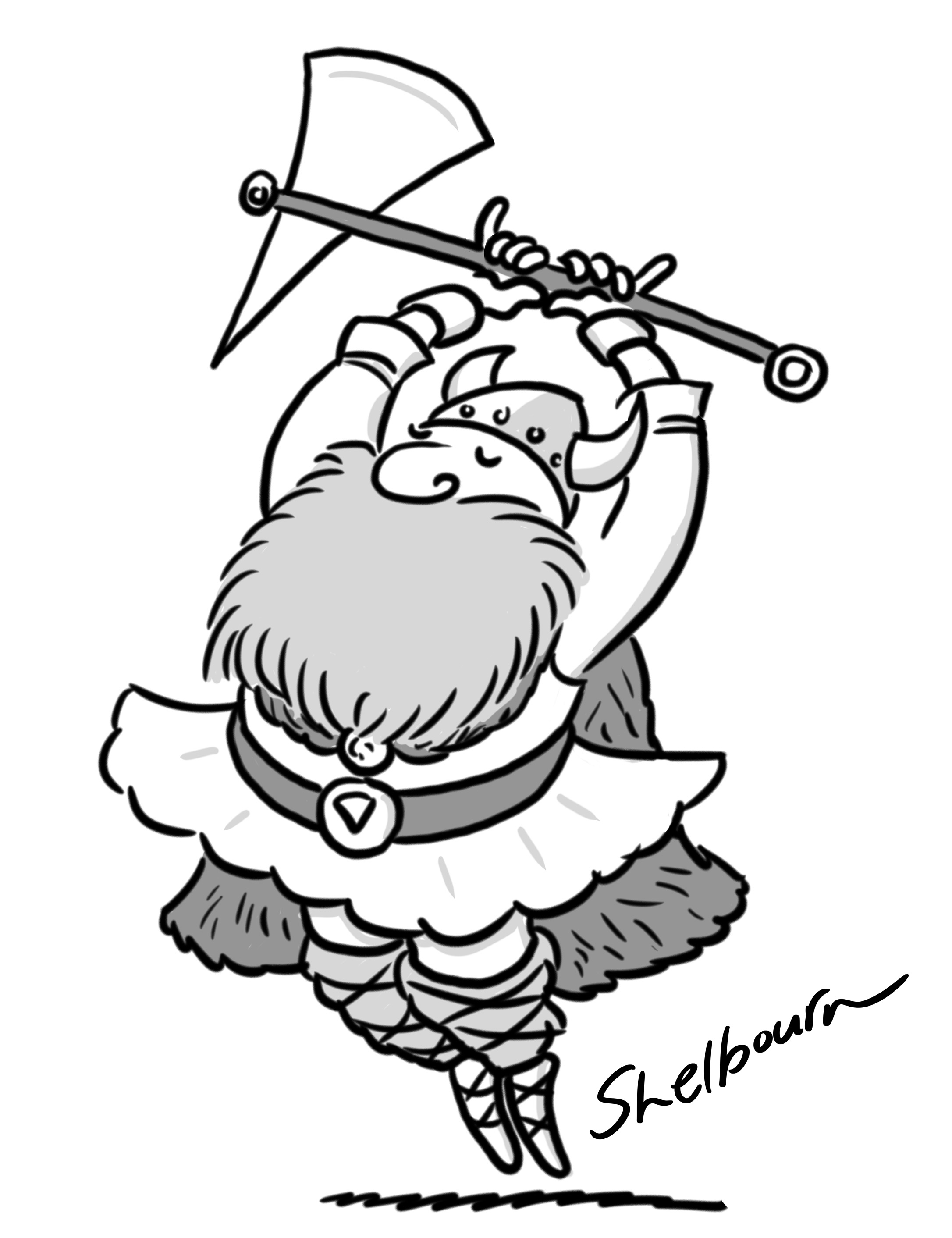
314 best images about Things Viking/Norse Patterns on Pinterest
Viking art, also known commonly as Norse art, is a term widely accepted for the art of Scandinavian Norsemen and Viking settlements further afield—particularly in the British Isles and Iceland —during the Viking Age of the 8th-11th centuries. Viking art has many design elements in common with Celtic, Germanic, the later Romanesque and.

17 Best images about Viking patterns on Pinterest Viking dragon, Tree
Viking art is emblematic of the surprisingly ornate material culture of the Northerners. Vikings loved elaborate decorations and they decorated many of the things they used: weapons, jewelry, runestones, ship woodwork and even their common, everyday items. They loved abstract and intricate animal designs and multiple interlacing lines.

Viking Artistic Development and Stylistic Influences on Later
Different Styles & Importance. Viking art is a term used to refer to the art of Scandinavia during the Vikings' era, until around the year 1000. The art is known for its fantastic animal designs and richly detailed patterns. This article will go through a brief history of Viking Art and its production across Scandinavia.

Viking Life, Viking Art, Viking Style, Viking Decor, Viking Ship
The sophistication and delicacy of Viking art ( 1982.323.1) presents a striking contrast with the stereotype of the rude and restless barbarian. Viking craftsmen excelled in woodwork and metalwork, adorning brooches ( 1991.308 ), weapons, implements, and ship timbers with abstracted animal forms and elaborate patterns of interlace ( 47.100.25ab ).

Pin on Viking
Viking art, also known commonly as Norse art, is a term widely accepted for the art of Scandinavian Norsemen and Viking settlements further afield—particularly in the British Isles and Iceland—during the Viking Age of the 8th-11th centuries CE. Viking art has many design elements in common with Celtic, Germanic, the later Romanesque and.

Slavic Sygryda Storrada Vikings Old Norse Design Painting by Mariusz
Exploring Traditional Viking Art. Artisans of the Viking age excelled in woodwork and metalwork. Their brooches, weapons, implements, and ship timbers often featured inlaid or carved abstract animal forms and elaborate interlacing patterns. In addition, runic texts and accompanying scenes were inscribed on wooden items, Viking ship timbers.

Viking 3D Art by Junggyu Kim zbrushtuts Vikings, Zbrush, Portrait
Viking art, also known commonly as Norse art, is a term widely accepted for the art of Scandinavian Norsemen and Viking settlements further afield—particularly in the British Isles and Iceland—during the Viking Age of the 8th-11th centuries. Viking art has many design elements in common with Celtic, Germanic, the later Romanesque and Eastern European art, sharing many influences with each.

Entry 26 by GiancarloGArt for Create a Traditional Viking/Norse Tattoo
A breakdown of the different artwork styles throughout the Viking Age, with examples and characteristics of each period, and how each style developed into th.

vikingartprint
Viking art: Beyond barbarians. 21st October 2014, 01:27 PDT. The Culture Show - Viking Art. We tend to view the Viking Age as a violent and bloodthirsty time - but its artistic treasures tell a.

Viking Art Contest Entry Viking Sword by twistedstrokes on DeviantArt
Art made by Scandinavians during the Viking Age (c. 790-1100 CE) mostly encompassed the decoration of functional objects made of wood, metal, stone, textile and other materials with relief carvings, engravings of animal shapes and abstract patterns.The motif of the stylised animal ('zoomorphic' art) - Viking Age art's most popular motif - stems from a tradition that existed across north.

The 25+ best Viking art ideas on Pinterest Viking pattern, Norse
Viking Art Styles - A Historical Guide. Despite often being portrayed as blood-thirsty pillagers, Vikings, or more accurately Norsemen, were fine craftsmen who loved to decorate wood, metal, stone, bone, ivory and textiles with elaborate designs. Weapons, jewelry, ships, religious artefacts and everyday domestic items were all carved with care.

Viking Patterns
Furthermore, Viking concept art has become a trend among many fans, we see many Viking designs on jewelry including the online space in computer games and graphic design. The Viking culture was among the most unique cultures in history and each cultural artifact is like a window into the Vikings' history, their lives, and ideals. The Vikings.

Viking by Hannah Christenson Viking art, Illustration
Viking art, also commonly known as Norse art, consist mostly of objects. You won't find a landscape of the Norwegian mountains hanging in a gallery that dates back to the 10 th century. Instead, the Vikings adorned everyday objects with carving and fine metalwork.. The designs are usually asymmetric and feature smooth, graceful curves. The.

Celtic dragon Viking embroidery, Norse tattoo, Viking art
The Oseberg Style. Time Period: Circa 800 - 875: The Oseberg style takes its name from a famous Viking Age burial site near Tonsberg, Norway, that yielded a treasure trove of Viking artifacts, including: The famed Oseberg ship, which was buried with the remains of two prominent women. Three ornately decorated wooden sleighs.

Viking Art Contest Entry The Longship by onerook on DeviantArt
The terms "traditional Viking art" and "Norse art" are used to describe the works of the Scandinavian seafarers who settled in regions such as Iceland and the British Isles from the 8th to the 11th centuries. The Vikings' history is entangled with that of many cultures; therefore, Viking design shares many characteristics with.

Viking Symbols, Viking Art, Viking Runes, Viking Ship, Celtic Fantasy
The Role of Viking Art in Modern Design. Viking art has also played a significant role in the world of design, with many contemporary designers drawing inspiration from Norse aesthetics. One notable example of this is the work of Danish furniture designer Arne Jacobsen, whose iconic Egg Chair, designed in 1958, features smooth curves and clean.